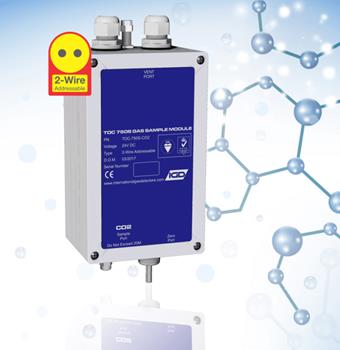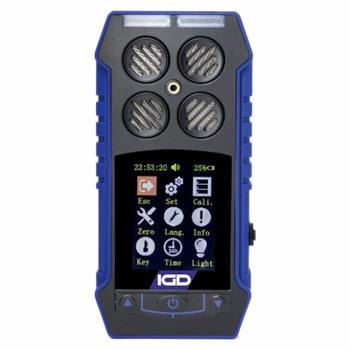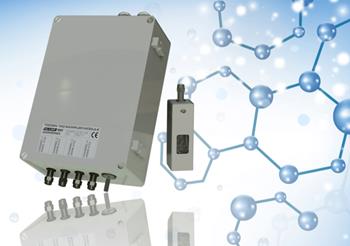TOCSIN 102 Thermal Conductivity Gas Detector
The TOCSIN 102 Thermal Conductivity Gas Detector consist of two matched elements which are used for the detection of gases in 0-100% volume concentrations. The elements operate on the thermal conductivity principle. The sensing element is open to the atmosphere under test and the reference element is supplied sealed in reference air. The response of the devices is dependent upon the difference between the thermal conductivity of the atmosphere under test and the reference air. When the atmosphere under test has a thermal conductivity higher than the reference air, the sensing element loses more heat to the surroundings than the reference element. This increased heat loss causes a cooling of the sensing element and subsequent reduction in the resistance of the sensing element compared to the reference element. The thermal conductivity of a gas mixture is dependent on temperature and the individual thermal conductivity of the constituents of the mixture. The temperature of importance is the operating temperature of the sensing element (typically a maximum pf 500 Deg C at the recommended bridge supply voltage). The detector is supplied pre-calibrated for the target gas in question. Typically this measurement technique is used to monitor binary gas mixtures e.g Helium in Nitrogen. The unit can be operated in either analogue or addressable modes and can be simply calibrated using a multi-meter and known gas concentration Siting of the detector should also be carefully considered to take into account air flows, site geometry and the characteristics of the target gas. Available sensor types include: Thermal Conductivity Gases detected include: Helium Nitrogen Carbon DioxideVisit the International Gas Detectors (IGD) website for more information on TOCSIN 102 Thermal Conductivity Gas Detector






